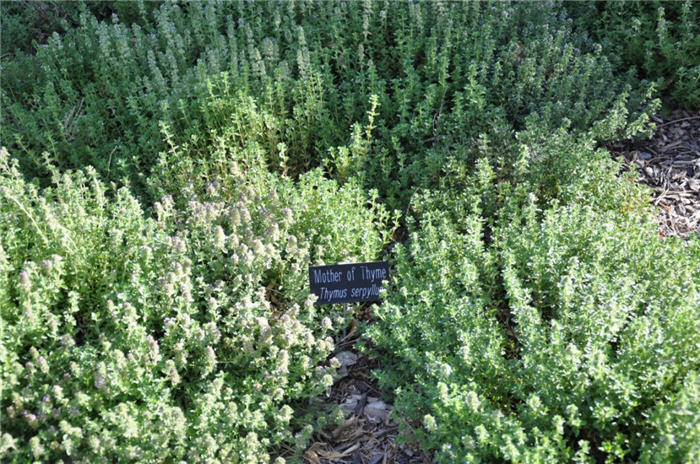| Botanical Name: Thymus serpyllum | |
| Common Name: Mother-of-Thyme |

-
Anatomy
-
Culture
-
Design
Plant Type
Ground cover, Perennial, Herb
Height Range
Under 1'
Flower Color
Purple
Flower Season
Summer
Leaf Color
Dark Green
Bark Color
n/a
Fruit Color
n/a
Fruit Season
n/a
Sun
Full
Water
Low
Growth Rate
Fast
Soil Type
Sandy, Clay, Loam
Soil Condition
Average, Rich, Poor, Well-drained, Dry
Soil pH
Neutral
Adverse Factors
Attracts Bees
Design Styles
English Cottage, Formal, Japanese, Mediterranean, Ranch, Spanish
Accenting Features
Fragrance, Showy Flowers
Seasonal Interest
Spring, Summer, Fall
Location Uses
Entry, Perennial Border, Shrub Border, Foundation, Parking Strip, Patio, Walkways
Special Uses
Container, Mass Planting, Lawn Alternative, Small Spaces
Attracts Wildlife
Butterflies
Information by: Stephanie Duer
Photographer:
Photographer:
-
Description
-
Notes
Mother-of-thyme is a woody based perennial which is primarily used as a ground cover. Numerous, thin, somewhat woody stems form a low mat (2 to 3 inches tall and 12 or so inches across) with tiny, rounded, glossy blue-green leaves. Leaves are aromatic, though usually not considered to be of culinary quality. Clusters of tiny, tubular, deep pink flowers appear in summer. Flowers are attractive to bees. There are many cultivars with a more dependably low habit; the species is a bit taller and so is best used at the sides of walks of paths, or to edge a sunny border.
Grow in full sun and well drained soil. Though vigorous, it will not overtake taller perennials and so is well suited for borders. Excellent in sunny parkstrips or as an alternative to lawn, provided its not one that gets played on. Mix a variety of thymes and veronicas for an interesting groundcover quilt. Does not require deadheading or fertilizing, though it can be mowed in early spring or after blooming, if necessary, to make it tidy.